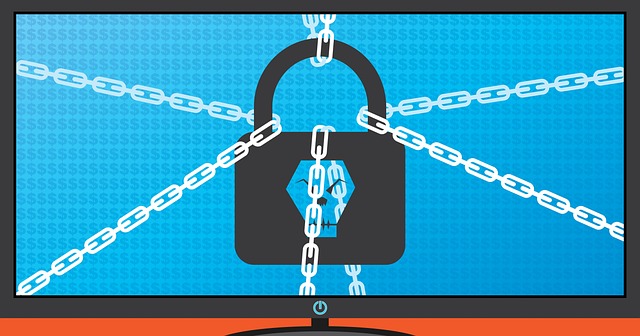
Summary
Law enforcement agencies successfully disrupted the LockBit ransomware operation, seizing control of its website and infrastructure. This international effort, led by the UK’s National Crime Agency in conjunction with the FBI and Europol, aims to dismantle the group and aid victims. The operation highlights the growing importance of international cooperation in combating cybercrime.
Explore the data solution with built-in protection against ransomware TrueNAS.
** Main Story**
Okay, so, big news in the fight against cybercrime! An international effort, led by the UK’s National Crime Agency (NCA) along with the FBI and Europol, just took down LockBit, that notorious ransomware group. It’s being called Operation Cronos, and honestly, it’s a pretty impressive win for the good guys.
They had agencies from like, ten different countries involved – Germany, France, Japan, even Australia and New Zealand. Think about the coordination it must have taken to pull that off. The authorities basically seized control of LockBit’s website and all their tech infrastructure. It sounds like something straight out of a movie, doesn’t it?
Inside Operation Cronos: A Real Body Blow
Operation Cronos didn’t just scratch the surface; it really went after LockBit’s entire operation. They wanted to cripple them, and it looks like they succeeded. Thirty-four servers taken down across multiple countries! The Netherlands, Germany, even Switzerland – the list goes on.
But here’s the kicker, and this is huge: law enforcement got their hands on LockBit’s source code and decryption keys. That means that potentially, victims can recover their encrypted data without paying those ridiculous ransoms. Imagine the relief for those businesses! Plus, all that data they grabbed? It’s going to be invaluable for tracking down the masterminds, the developers, everyone involved. It will help them target the criminals’ assets.
The Impact of LockBit’s Reign: They Were a Menace
LockBit wasn’t some small-time operation; they were one of the biggest, most damaging ransomware groups in the world. They’ve been linked to about a quarter of all recent ransomware attacks. Think about that for a second. They went after major companies, governments, you name it. Hospitals, schools… places that can’t afford to be down. The damage they caused is in the billions, considering ransom payments and recovery costs. And it just shows how serious a threat ransomware is becoming, right?
What This Means Moving Forward
This takedown is a major victory, no doubt about it. It sends a really strong message to other ransomware groups: we’re coming for you. It also shows that international collaboration actually works when it comes to fighting cybercrime.
Plus, this feels like a shift in strategy. Instead of just reacting to attacks, authorities are, as they put it, “hacking the hackers.” It is proactive, and I think it’s absolutely what’s needed going forward. As of today, February 27, 2025, LockBit is, for all intents and purposes, done. Out of their own systems and facing serious legal trouble. I imagine there’s going to be a lot more arrests and prosecutions coming soon. It is a clear sign that law enforcement is committed to holding these cybercriminals accountable.
That said, let’s not get complacent. The fight against ransomware is far from over. There are still plenty of other groups out there, and they’re constantly evolving, and that means, we have to stay vigilant, too. We also have to keep adapting how we respond.
Protecting Yourself: A Few Essential Steps
Ransomware’s still a huge threat, so organizations really need to take action to protect themselves. You know the drill, but it’s worth repeating, so I can cover my back:
- Back it up! Back it up! Back it up! Make sure all your critical data is backed up regularly. Store it offline or in a secure cloud. It’s your insurance policy.
- Keep Software Updated: Patch everything. Seriously, update all software and operating systems with the latest security patches. Those updates aren’t just annoying pop-ups; they’re fixing vulnerabilities.
- Educate Employees: Teach your employees about phishing emails and social engineering. They’re often the weakest link.
- Cybersecurity Measures: Use strong passwords, multi-factor authentication, and robust firewalls. It’s basic, but it works.
- Incident Response Plan: Have a plan. What do you do if you get hit? Who do you call? How do you recover? Don’t wait until it happens to figure it out.
By taking these steps, you can significantly reduce your risk. It’s an ongoing battle, but with a little preparation and vigilance, you can make it a lot harder for these criminals to succeed.
And who knows, maybe one day we’ll see ransomware groups become as rare as dial-up internet. One can dream, right?


“Hacking the hackers,” eh? Sounds like it’s time for law enforcement to level up their skills! I wonder if they need a cybersecurity sidekick… maybe someone who specializes in crafting Trojan Horses out of cat videos? I’m just spitballing here… for purely altruistic reasons, of course.
Haha, love the idea of a cybersecurity sidekick armed with cat videos! The creativity is definitely there. Seriously though, the level of skill and international cooperation required for this operation highlights how far law enforcement has come. Who knows what innovative tactics they’ll develop next!
Editor: StorageTech.News
Thank you to our Sponsor Esdebe
Operation Cronos’ success truly highlights the impact of proactive measures, “hacking the hackers,” as the article states. It will be interesting to see if this sets a new precedent for future law enforcement strategies in combating cybercrime.